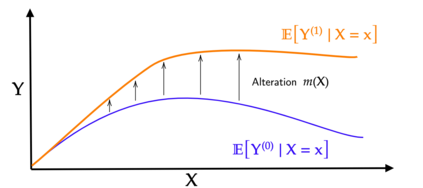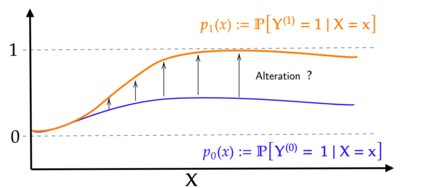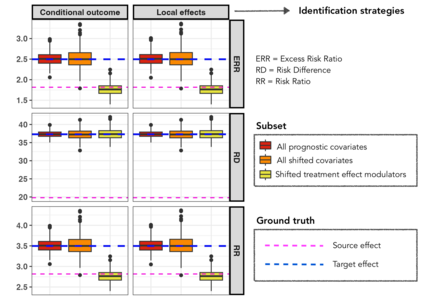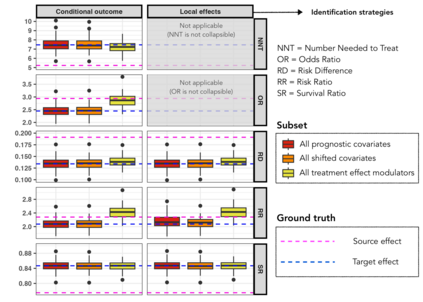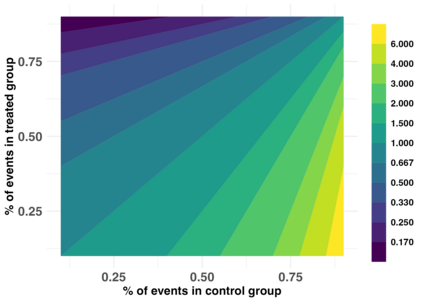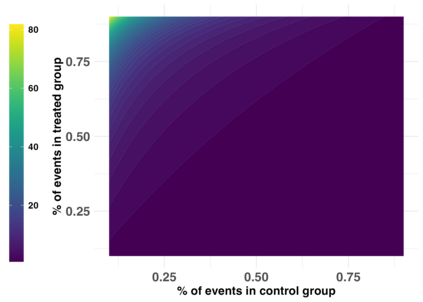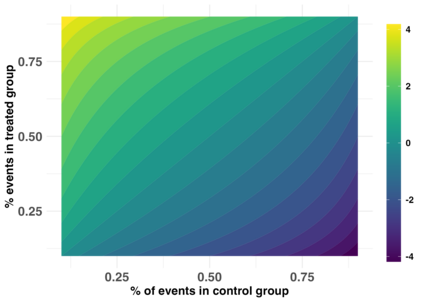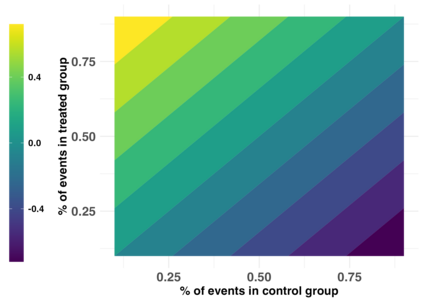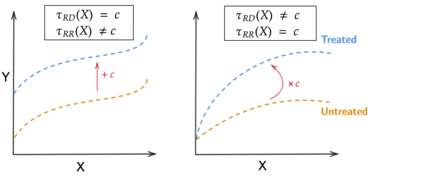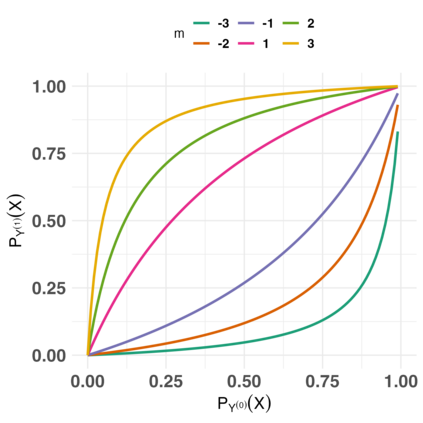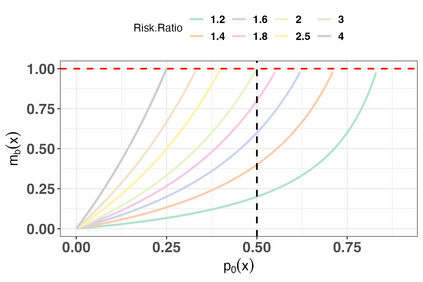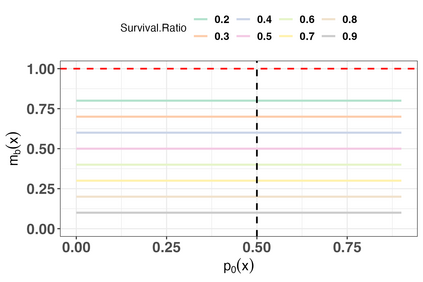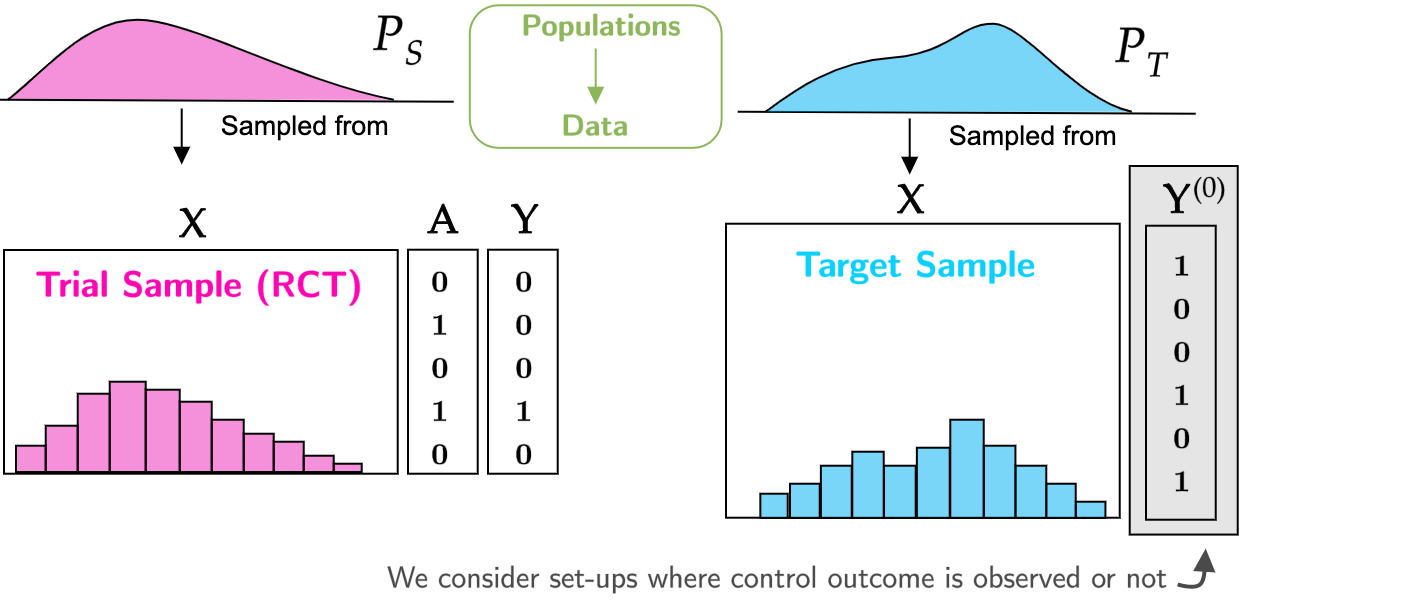There are many measures to report so-called treatment or causal effect: absolute difference, ratio, odds ratio, number needed to treat, and so on. The choice of a measure, e.g. absolute versus relative, is often debated because it leads to different appreciations of the same phenomenon; but it also implies different heterogeneity of treatment effect. In addition some measures but not all have appealing properties such as collapsibility, matching the intuition of a population summary. We review common measures, and their pros and cons typically brought forward. Doing so, we clarify notions of collapsibility and treatment effect heterogeneity, unifying different existing definitions. But our main contribution is to propose to reverse the thinking: rather than starting from the measure, we propose to start from a non-parametric generative model of the outcome. Depending on the nature of the outcome, some causal measures disentangle treatment modulations from baseline risk. Therefore, our analysis outlines an understanding what heterogeneity and homogeneity of treatment effect mean, not through the lens of the measure, but through the lens of the covariates. Our goal is the generalization of causal measures. We show that different sets of covariates are needed to generalize a effect to a different target population depending on (i) the causal measure of interest, (ii) the nature of the outcome, and (iii) a conditional outcome model or local effects are used to generalize.
翻译:摘要:报告所谓的治疗或因果效应有许多度量指标:绝对差异、比率、比值比、需要治疗的人数等等。度量指标的选择,例如绝对 versus 相对,经常被争论,因为它导致对相同现象的不同评价;但它还意味着不同的治疗效果异质性。另外一些指标具有吸引人的属性,例如可折叠性、符合总体概述的直觉。我们审查了常见的度量指标以及它们通常提出的优缺点。这样做,我们澄清了可折叠性和治疗效果异质性的概念,统一了不同的现有定义。但是我们的主要贡献是提出倒过来思考:我们建议从结果的非参数生成模型开始,而不是从度量指标开始。根据结果的性质,有些因果关系度量可以将治疗调节与基线风险区分开来。因此,我们的分析通过协变量的镜头概述了异质性和治疗效果均匀性的含义,而不是通过度量指标的镜头。我们的目标是因果关系度量的推广。我们展示了不同的协变量集合,取决于感兴趣的因果关系度量、结果的性质,以及使用条件结果模型或局部效应来推广到不同的目标人群。


